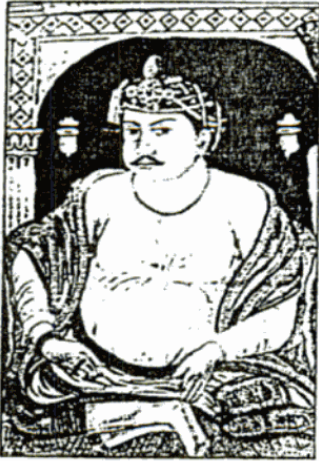
Chhindwara is a major city in India and a Municipal Corporation in the Chhindwara district in the Indian state of Madhya Pradesh. The city is the administrative headquarters of Chhindwara District. Chhindwara is reachable by rail or road from adjacent cities Betul, Jabalpur and Nagpur. The nearest airports are in Nagpur, Mumbai, New Delhi and Srinagar (130 km); however there is a small airport located in the district
- which is not serviceable for passenger planes.

Debagarh District also known as Deogarh District is a district of Odisha state, India. Located in the north-western part of the state, it is one of Odisha's 30 administrative districts and has its headquarters at Debagarh (Deogarh) town.

Chhindwara district is one of the major districts of Madhya Pradesh state of India, and Chhindwara town is the district headquarters. Chhindwara was the largest district in Madhya Pradesh with an area of 10,293 square km before the bifurcation of Pandhurna district. The district is part of Jabalpur division.

Seoni District is a district of Madhya Pradesh state in central India. The town of Seoni is the district's headquarters.

Ramtek is a city and municipal council in Nagpur district of Maharashtra, India.

The Kingdom of Nagpur was a kingdom within the Maratha Confederacy in the 18th and 19th centuries. It was ruled by the Maratha Bhonsle dynasty in the mid-18th century. The city of Nagpur was the capital of the state.

The Dashavatara Temple is an early 6th century Hindu temple located at Deogarh, Lalitpur district, Uttar Pradesh which is 125 kilometers from Jhansi, in the Betwa River valley in northern-central India. It has a simple, one cell square plan and is one of the earliest Hindu stone temples still surviving today. Built in the Gupta Period, the Dashavatara Temple at Deogarh shows the ornate Gupta style architecture.

The history of Nagpur, in central India, spans over 5,000 years, including the Kingdom of Nagpur in the 18th and 19th century. Human existence around present-day Nagpur city can be traced back 3,000 years to the 8th century BC. Menhir burial sites at Drugdhamna indicate megalithic culture existed around Nagpur and is still followed in present times.

Deogarh is a village in Lalitpur district of the Indian state of Uttar Pradesh. It is located on the right bank of Betwa River and to the west of Lalitpur hills. It is known for Gupta monuments and for many ancient monuments of Jain origins inside and outside the walls of the fort.
Ajanbahu Jatbasha is considered by historians to be founder of the Gond dynasty of Chhindwara and Nagpur, which ruled the present days territories of Madhya Pradesh, Chhattisgarh and part of Maharashtra in the 16th-18th centuries. Documentation of his origins and rise to power have not survived, but he is the first historical leader of the mountain Gondi people.

The Bilaspur–Nagpur section is part of the Howrah–Nagpur–Mumbai line and connects Bilaspur in the Indian state of Chhattisgarh and Nagpur in Maharashtra. Part of one of the major trunk lines in the country, it passes through a forested plateau region interspersed with fertile valleys.

The Kanhan River is an important right bank tributary of the Wainganga River draining a large area lying south of Satpura range in central India. Along its 275 km run through the Indian States of Maharashtra and Madhya Pradesh, it receives its largest tributary - Pench River, a major water source for the metropolis of Nagpur.

Bakht Buland Shah was a ruler of the Rajgond dynasty. He added to his kingdom, the territories of Chanda and Mandla, and portions of Nagpur, Balaghat, Seoni, Bhandara and the adjoining Rajput kingdom of Kherla/Khedla. The present districts of Chhindwara and Betul also fell under his control. A great warrior, he went on to conquer Pauni, Dongartal, Sivni, and Katangi.

The Jain Temple complex is group of 31 Jain temples located at Deogarh in Lalitpur district, Uttar Pradesh built around 8th to 17th century CE. The Jain complex in Deogarh are protected by the Archaeological Survey of India (ASI), and managed through its Northern Circle Office located in Lucknow. ASI maintain an archaeological museum at the Deogarh site, which is noted for its treasured archaeological sculptures.
The Gondwana Kingdoms were the ruling kingdoms in the Gondwana region of India. The Gondwana region includes the core region of the eastern part of the Vidarbha of Maharashtra, Garha Kingdom, the parts of Madhya Pradesh immediately to the north of it, and parts of western Chhattisgarh. The wider region extends beyond these, also including parts of northern Telangana, western Odisha and southern Uttar Pradesh.

The Deogarh Fort or Devgarh Fort is one of the very old fort situated in Madhya Pradesh, India. It was the capital of a Gond Dynasty and is located in the present day town of Devgarh, at a distance of 42 km from the district headquarter Chhindwara. It sprawls over a hill 650 m (2132.55 ft) in height and spread over a large area. There are many wells, tanks and building which shows that the Gond capital was extended over a large area.

The Gonds of Deogarh were a Gond royal house that ruled large parts of the Vidarbha region and parts of present-day southern Madhya Pradesh. Their Kingdom consisted of the area which later became the Nagpur Kingdom. They made Nagpur region a prosperous and plentiful kingdom, founding the city of Nagpur and building further infrastructure. However, internal bickering led to their decline and they were practically made state pensioneries by the Maratha general Raghoji I Bhonsle in the 1743.
The siege of Nagpur was laid by Khan-i-Dauran, a high-ranking Mughal official to the fort of Nagpur, ruled by the Gond king of Deogarh, Kok Shah.















